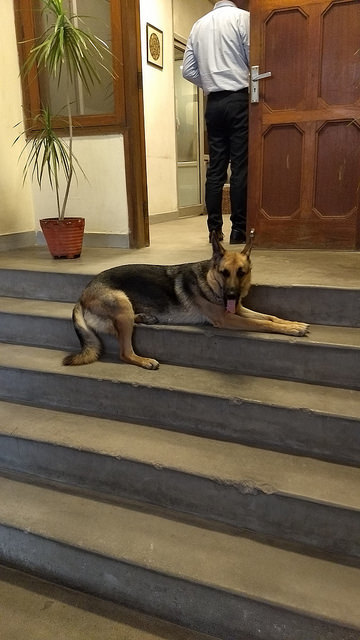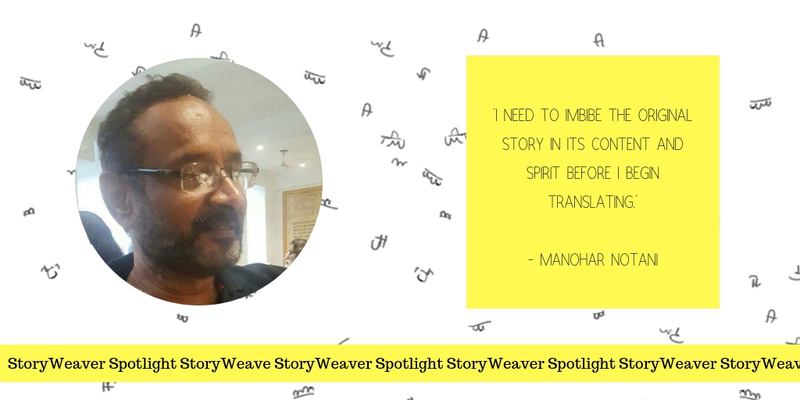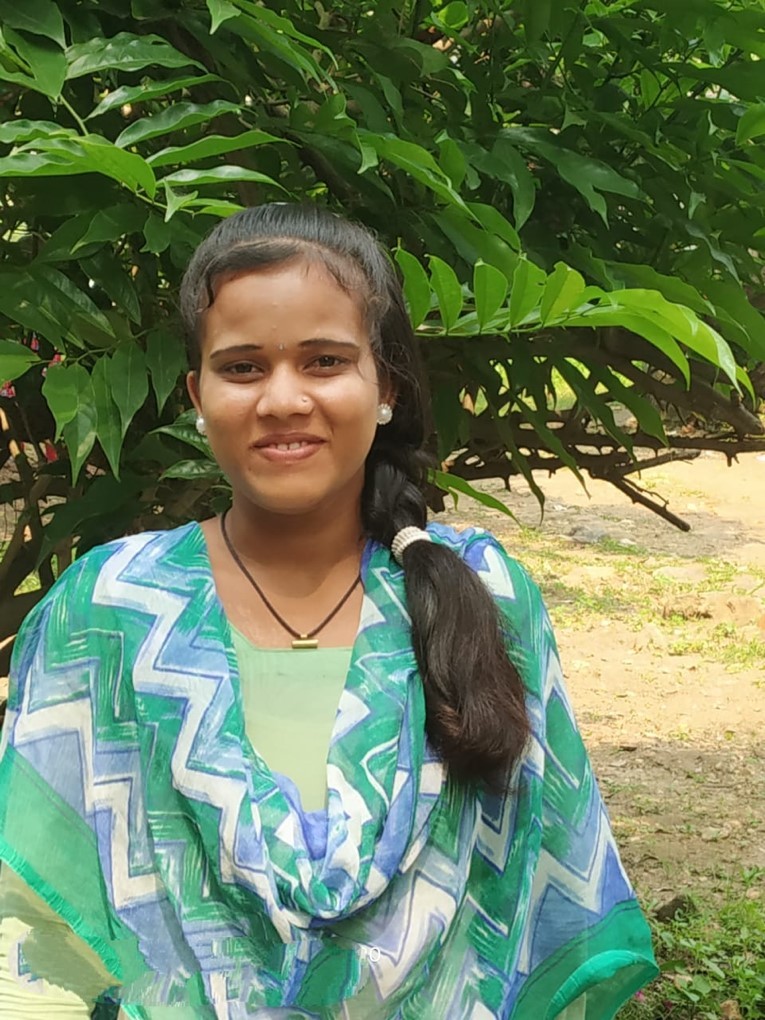Fostering bonds with students through stories
Posted by Remya Padmadas on June 28, 2017Riddhi Dastidar recently joined Pratham Books as Outreach Manager. Here she writes about our recent workshop in Delhi, with Humana India.
On a scorching summer day in June, we found ourselves in the winding bylanes of Kishangarh in Delhi, looking for the Humana India Office. We entered to wooden floors, quiet reading spaces filled with books in multiple nooks and a massive German Shepherd dog draped languorously across the gate to welcome us in.

Humana People to People India is a part of Humana International's network of 31 organisations in Europe, Africa, Asia and the Americas working across a range of issues from from health to microfinance. Our overlap in interest comes from their work in Education.
HPPI's educational programmes aim to equip people with knowledge and skills to break the cycle of poverty and fulfill their potential. Their five programmes are Necessary Teacher Training Programme (NeTT), Academy for Working Children, Girls Bridge Education, Step up Centers and Prarambh. NeTT and Prarambh focus on incubating quality teachers. Humana had invited their NeTT master trainers from different states to spend the day with us to know about StoryWeaver and how can it be used to bring in a reading culture in the classroom, as well as serve as a resource pool for our teachers. We also had trainers from other organizations like Stir Education and Pratham who added to the diversity of the group.

We started by getting to know the workshop participants a little better by discovering their hidden talents. Someone mentioned they were good at working with special needs children while another teacher found travelling interesting. Stories give way to many emotions and what better way to establish that than to begin the session with a story? The audience giggled and winced and tried to come up with a solution to Bheema’s problem in the process realising with us how important stories are to classrooms!
How stories help kindle curiosity and develop lateral thinking in children.
After we walked through how StoryWeaver works, our philosophy of reaching as many children in need as possible in their native tongue, and hence our embrace of Creative Commons, it was time for the teachers to get their own hands dirty. They practiced curating lists of stories on specific themes (from Math concepts through biryani making to a Level 1 reading on Traffic lights). They got into groups to take a stab at translating stories into Hindi and finally even creating their own story from our set of open illustrations.
To break down the concept of ‘filters’ on StoryWeaver to help select the desired kind of tale we drew a parallel to online shopping - Amazon and Flipkart being commonly recognized.
An interesting story we explored brought out the critical role illustration can play in a book. We read 'दीदी का रंग बिरंगा खज़ाना', and the teachers pointed out that as Didi became happier, the book bloomed from black and white into colour - hence even a child struggling to read the words would be able to grasp what was happening!
By the end of the workshop we had a couple of first-time story-writers in our midst. The teachers were beginning to share the challenges of balancing something as ‘inessential’ and essential as the time to read for joy in class with the demands of administrative work and completing the syllabus. Waseem, one of the trainers from Stir mentioned that the main reason we work is actually the children. Very often lost in the pressures of checking very real demands and tasks off the checklist, we forget the heart of it - which is the relationship being built with the child. He pointed out that stories could be a great option to reverse this disinvestment and foster strong relationships.

We came out of the workshop with many of the teachers coming up to us to ask for follow-up training with their organisations, and excited to see how they would go on to integrate stories into making different kinds of academic learning interesting - be it learning about division through biryani or just taking 20 minutes out of the day to Drop Everything And Read!
To see more images from the workshop, click here.
If you would like us to conduct a workshop with your organisation, drop us an email at [email protected]
Be the first to comment.
StoryWeaver Spotlight: Manohar Notani
Posted by Amna Singh on October 01, 2018Manohar Notani is an engineer by qualification, but over time, realized that engineering was not his cup of tea. He says 'This realization of being a fourth idiot came somewhat late'. He is now happy in the world of words and we are lucky to have his skills as a Hindi translator. His transaltion of MIss Bandicota Bengalensis Digs up the Seashore won the Hindi book of the Year award at FICCI.

Q: What is your personal relationship to language and translation?
A: It should be, and should sound ‘natural’. I don’t like to treat language as a mere means of communication. Language is an independent entity itself. Hence, my utmost endeavor is to ingest the concept(s), thought(s) presented in the ‘original’ and then present them in ‘my’ language as if they were never alien to it.
Q: When you’ve been given a story to translate, what’s your process, and how long does it generally take?
A: It all depends on the fluidity and cogency of the original. If the given story has a natural spontaneity and mirth in it, that ‘wow’ element will follow easily and naturally in my translation too. Otherwise, I have to have 3-4 reading and re-reading sessions prior to translating it. In short, I need to imbibe the original story in its content and spirit.
Q: What do stories in translation bring to young readers?
A: Pure pleasure, at least, if nothing else.
Q: How did you cultivate the skills needed to translate books for children?
A: Keeping alive and kicking my child within, through perseverance though.
Q: You’ve translated many stories for us. Which has been your favourite to work on?
A: Miss Bandicota Bengalensis Digs Up the Seashore , of course.

Q: What is the hardest thing about translating from English into Hindi? How do you navigate words or phrases that are tricky to translate?
A: Read, read, and read a lot. One has to have a rich ‘working’ vocabulary. Moreover, I invest a lot in books, dictionaries, subscribing to online dictionaries etc.
Q: Tell us something about how did you go about translating 'Miss Bandicota'? And how do you feel about the outcome?
A: To translate a story of Miss Bandicota’ s caliber, one needs to have the ‘feel’ of its milieu and throw one’s imagination to childlike tantrums.
Q: How do you feel when your story reaches the child?
A: It’s a sheer, yet indefinable pleasure.
Q: How else do you think we can join hands to take more stories to more children in more languages.
A: By having a strong faith in storytelling as a strong device for making our universe a better habitat.
Q: What type of person do you think makes the best translator for children’s stories?
A: One who has a knack for nonsense.
Q: Do you have any advice for anyone interested in becoming a translator?
A: Be a perpetual yet an untiring learner.
Q: A book you'd like to recommend to other translators?
A: The God of Small Things and White Tiger.
Be the first to comment.A community comes together to safeguard their language
Posted by Amna Singh on October 01, 2018Beginning in 2014, the Adivasi community has mobilized themselves to save their language and culture. Over 8 workshops, Gondi speakers from all 7 states got together to create the first standard Gondi lexicon. In the 9th workshop, Gondi speakers met with researchers from Microsoft Research India to discuss how their language can be taken online. The consensus at the meeting was that before any work could start, there needed to be 100,000 lines of translation from Gondi to a mainstream language.
In the 10th and most recent workshop with Pratham Books' StoryWeaver team, over 20 Gondi speakers from 3 different states gathered together from September 18th to September 28th to translate children’s books from Hindi to Gondi. The purpose of the workshop was two-fold: creating a repository of children’s stories in Gondi which can be distributed in schools, and gathering enough data to build a machine translation tool.

Workshop participants translating children’s stories to Gondi

The truck that CGnet uses to travel and perform at Gondi-speaking villages

Kumari Shashila, a Gondi speaker from Orchha, Koilebeda, Kanker, who attended the Gondi translation workshop after meeting the yatra team
In the coming few months, we are planning to build on this effort and obtain funding to print and distribute these books in the villages that the yatra team travels to. We also plan to hold many more such workshops to reach the magical figure of 100,000 lines. If you would like to help or contribute to this effort, you can email [email protected]